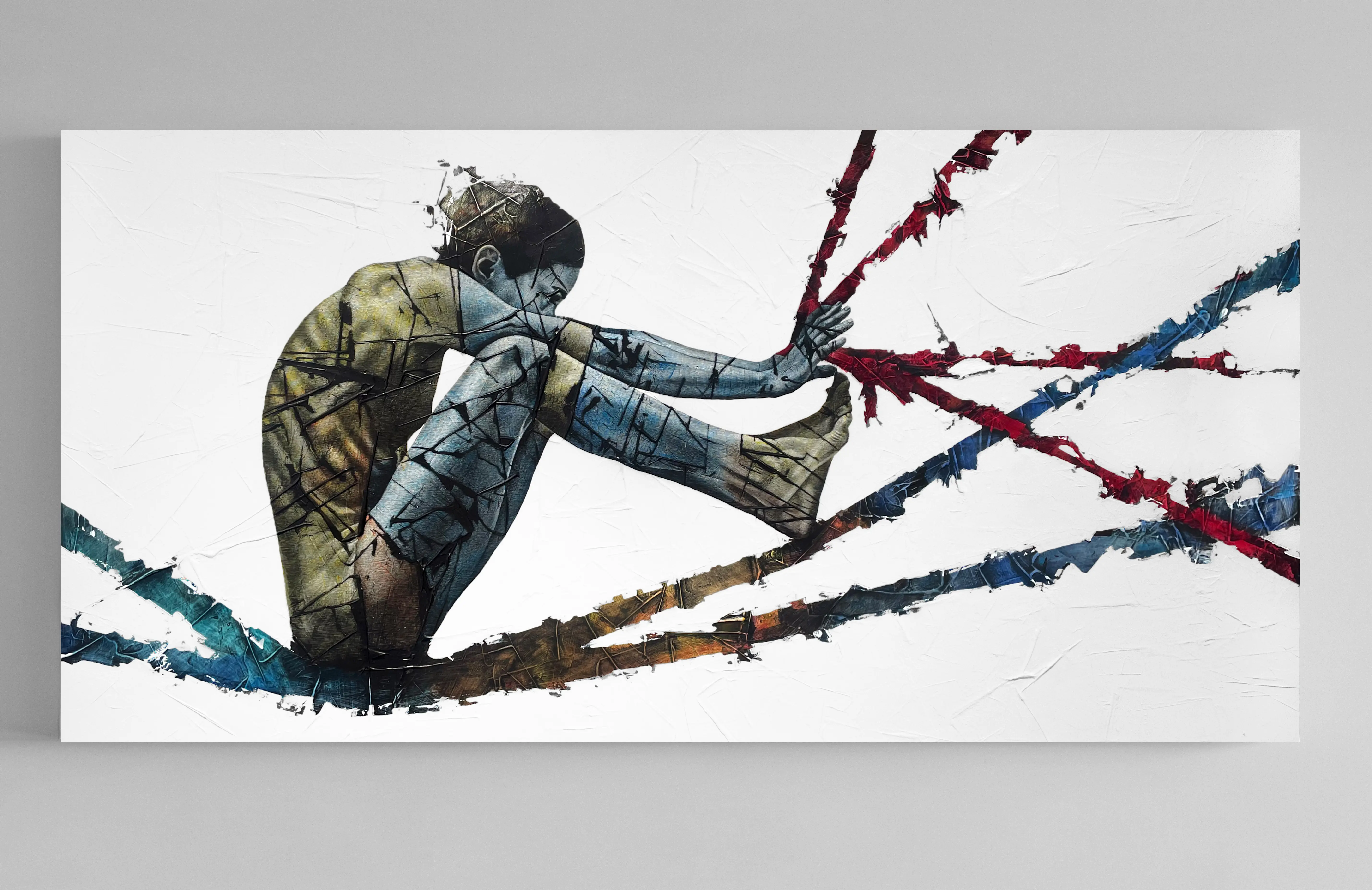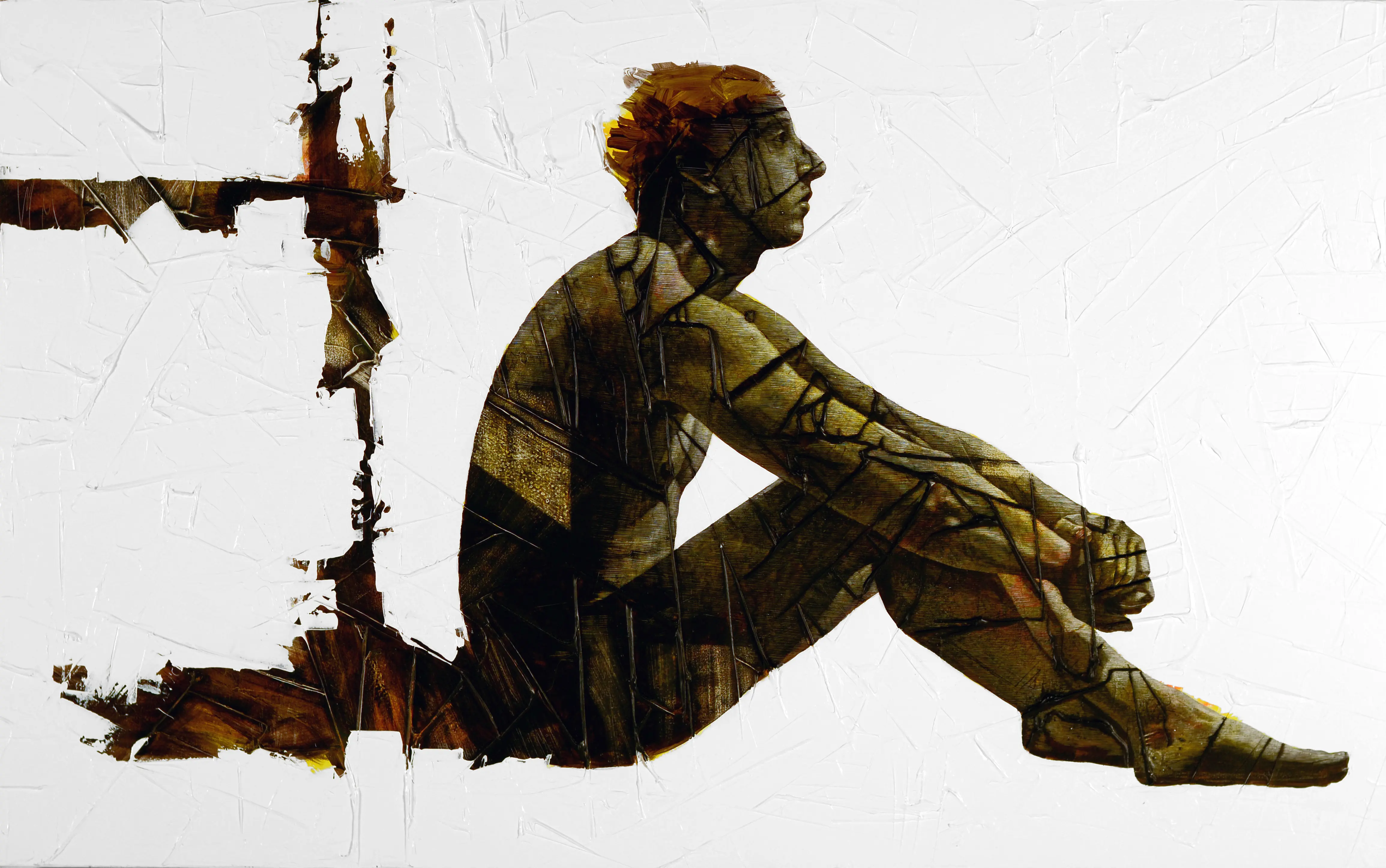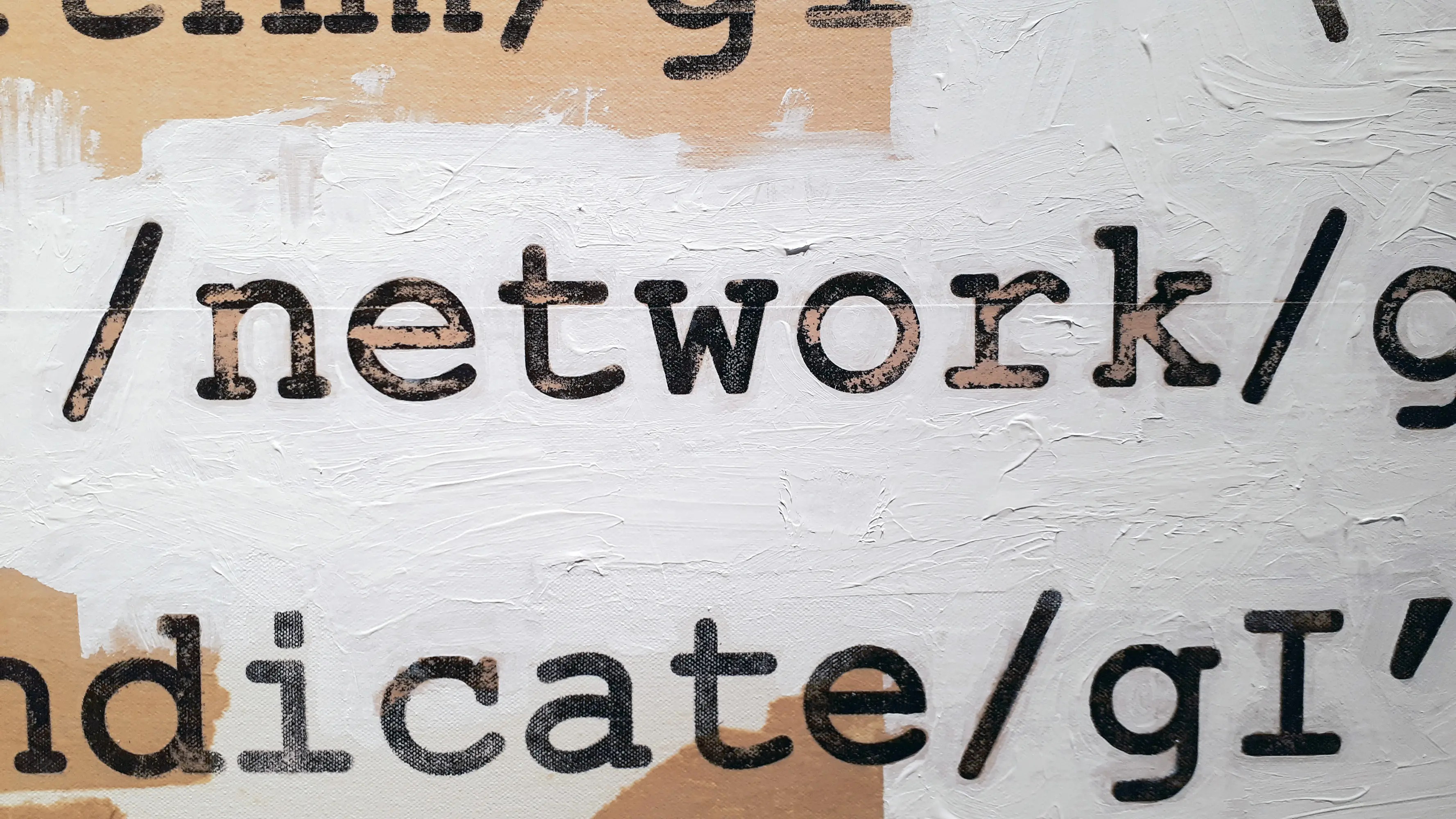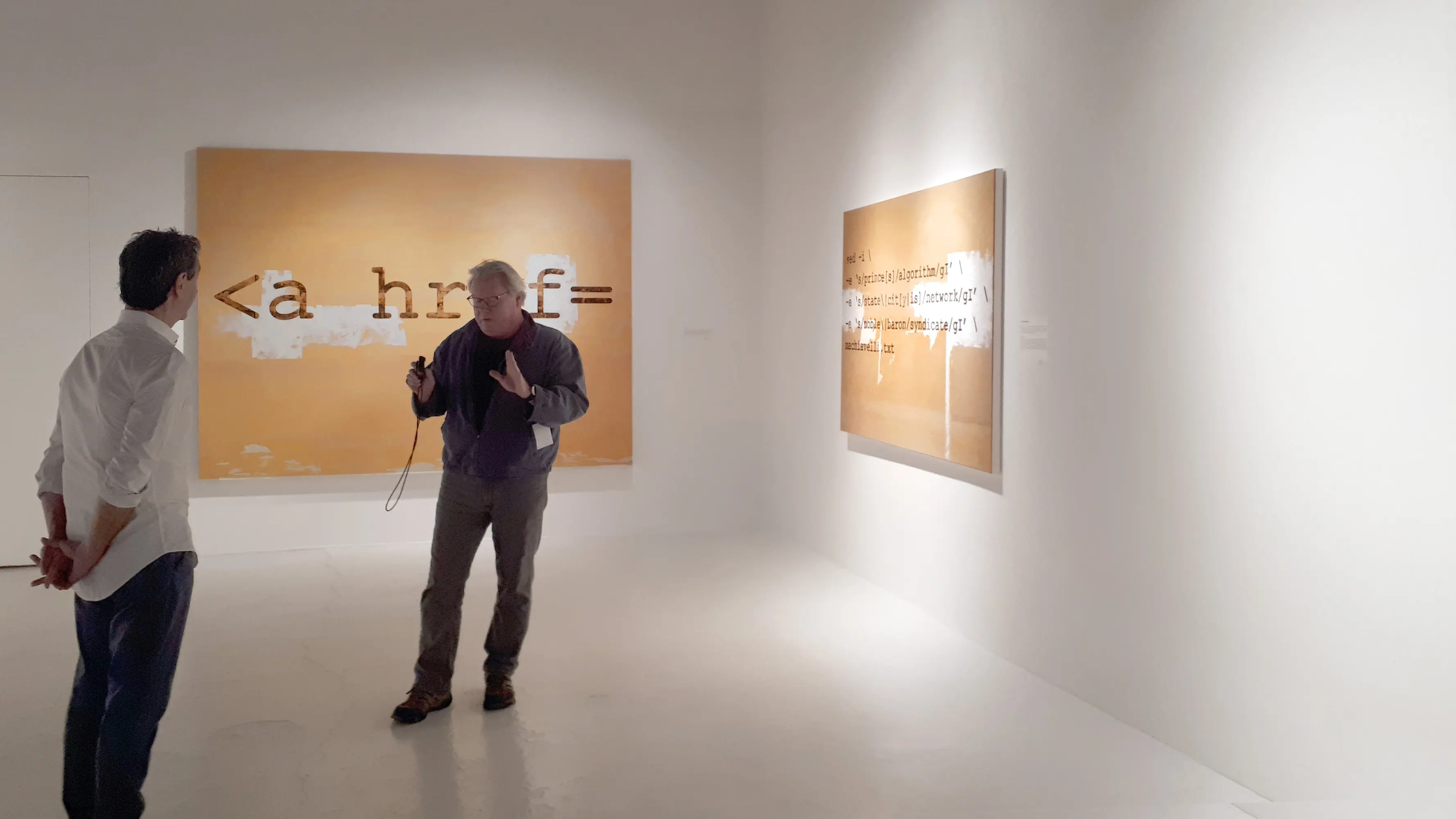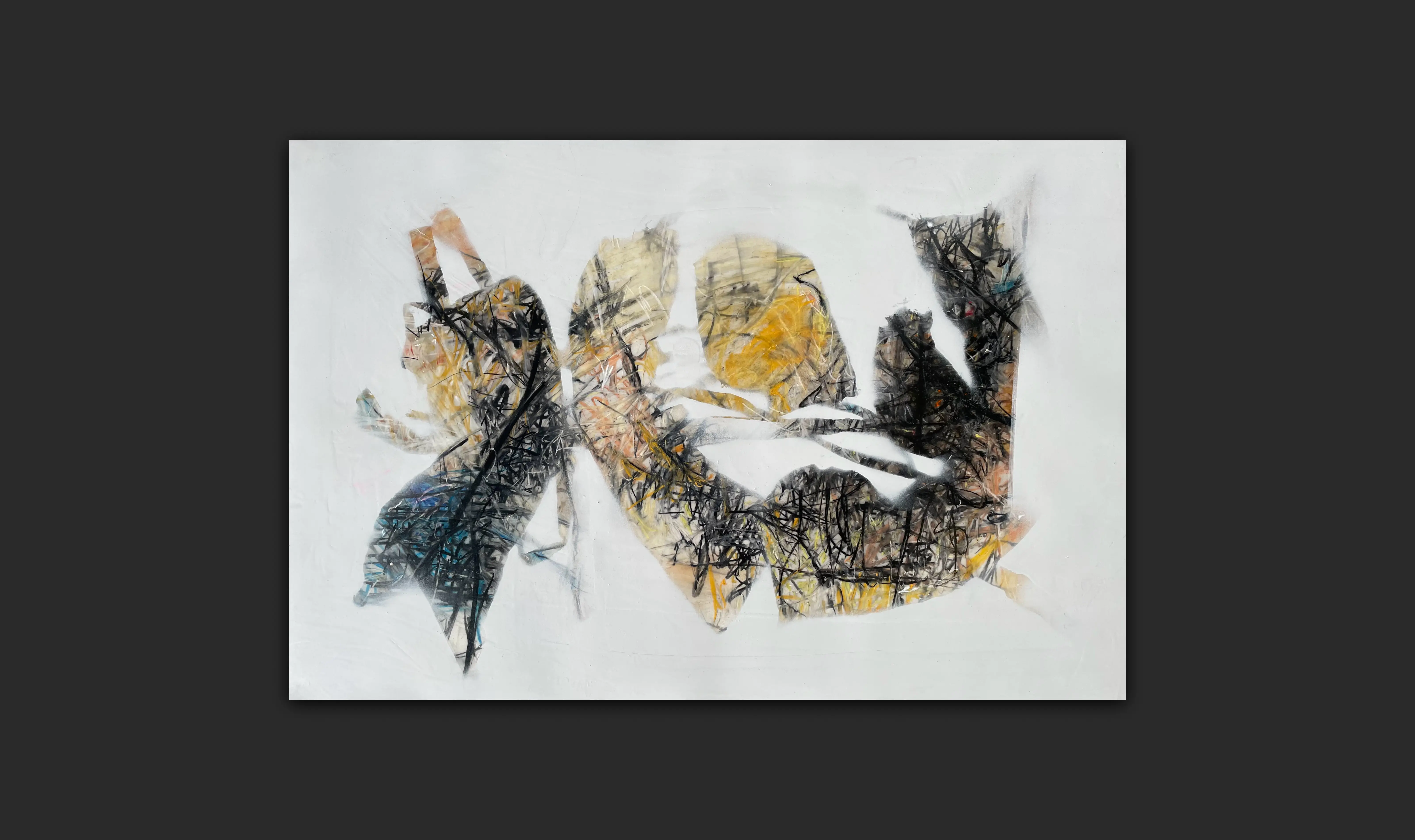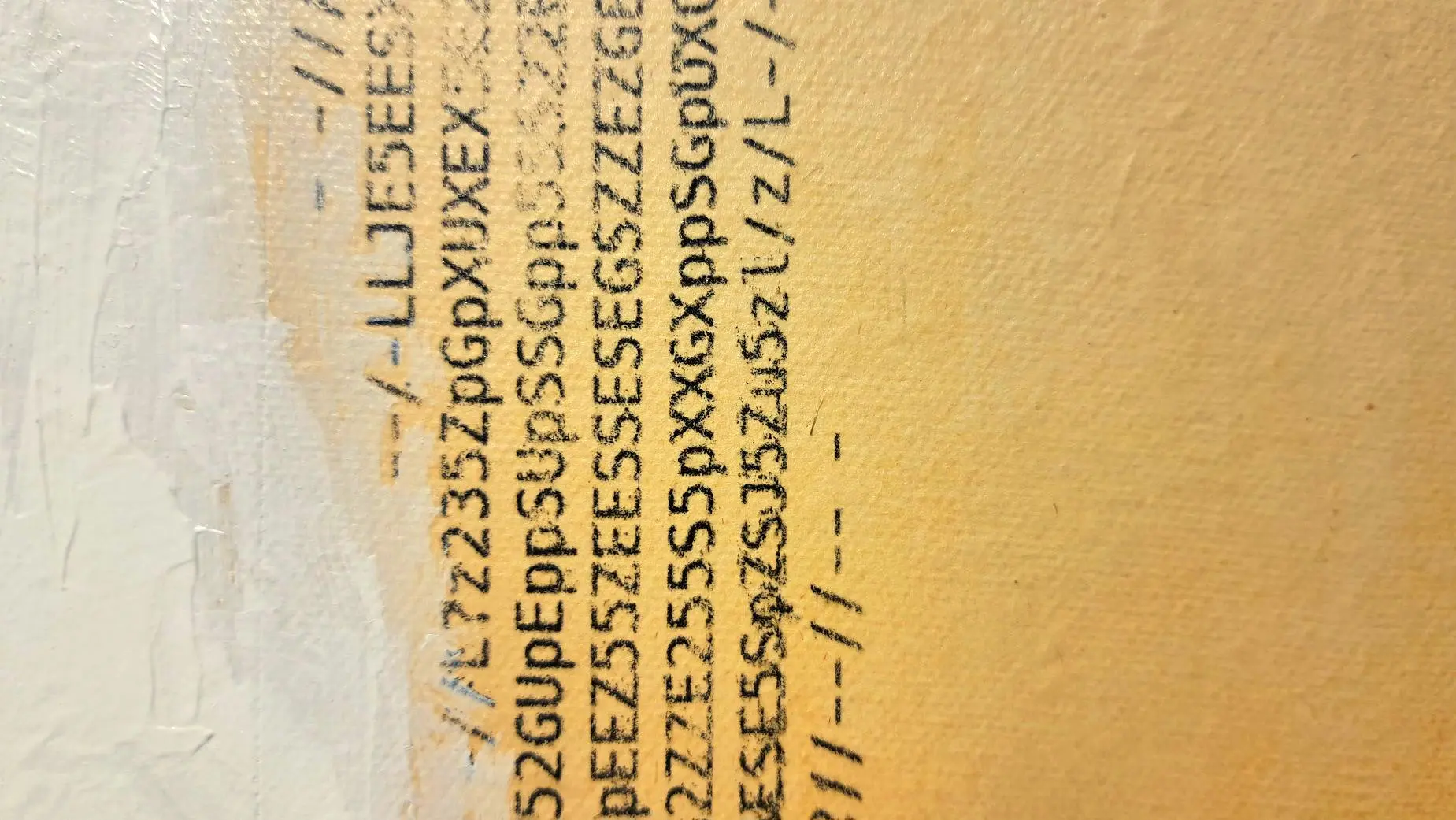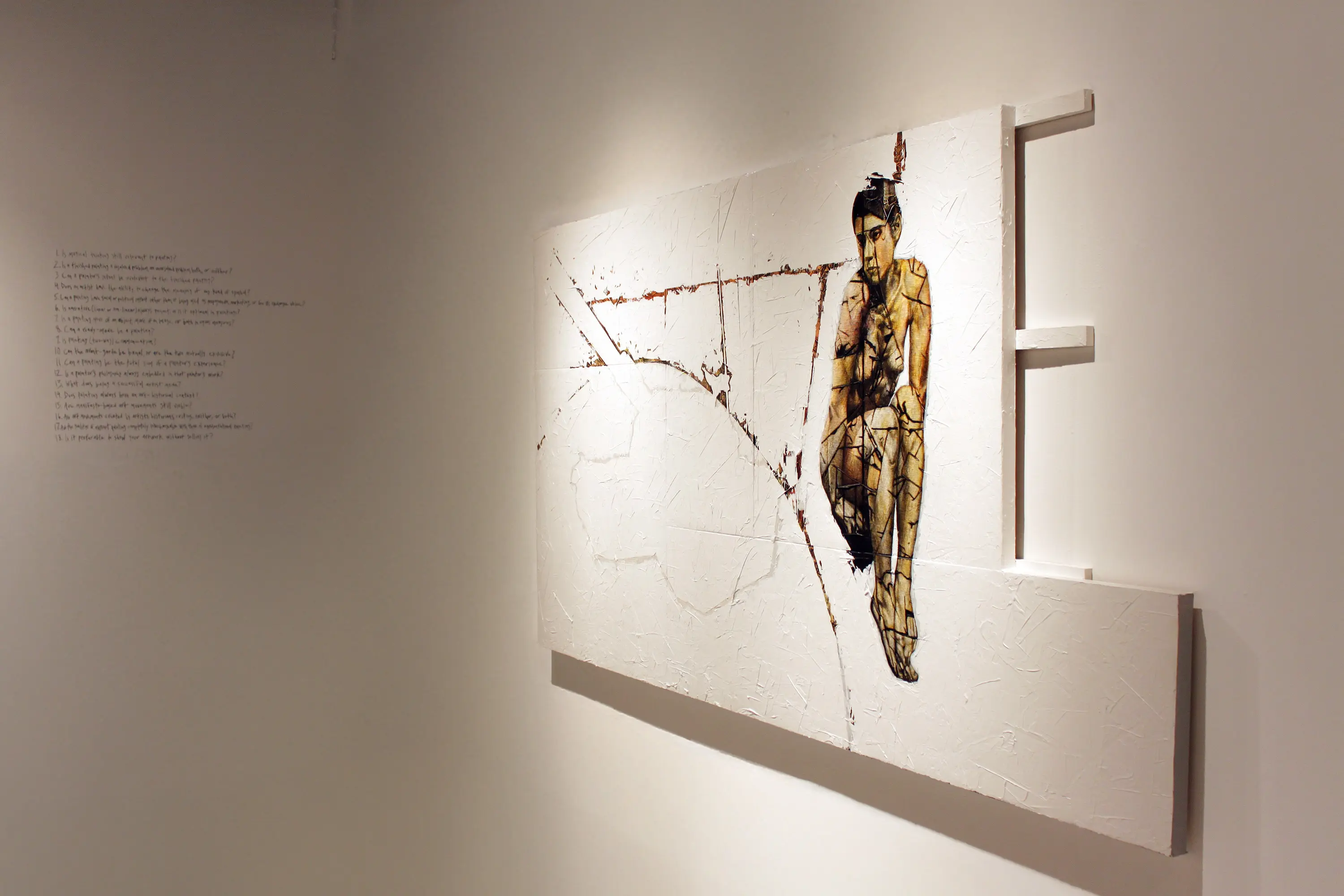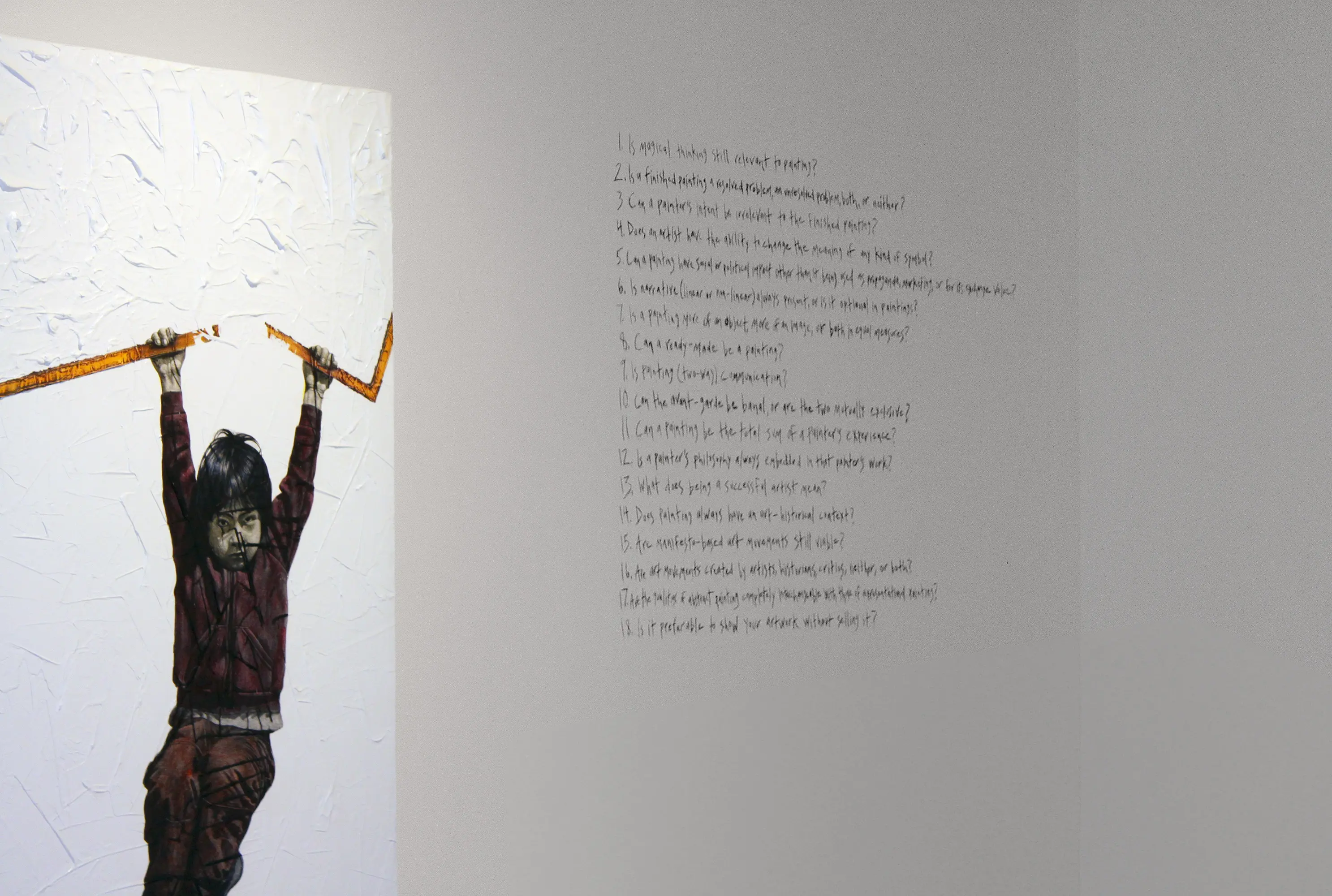Adrian Leverkuhn Art
body history
Body History
The paintings in this cycle are based on events and ideas that leave significant marks on our collective and individual bodies. They are rendered using sgraffito, in acrylics on canvas. Sgraffito is a technique where a surface is scratched to reveal what lies underneath. It was used in the illumination of manuscripts, as well as in architectural decoration during the Renaissance, and in Islamic pottery. For my purposes, the meaningful part is that the process is subtractive, rather than additive.
There are three bodies of work in this cycle: Palimpsest+, The Age of Treason+, and Isomorphica+.
For current works, please see this page+.
code painting
Code Paintings
These paintings contain executable computer code. For example, a script for sed, the text manipulation program written in the mid 1970s at Bell Labs. The code painted on one canvas will substitute certain words in Niccolo Machiavelli's "The Prince": state and city with network; nobles and barons with syndicate; and prince with algorithm. The code is first transfered to newsprint, the formerly ubiquitous news delivery vehicle. This cycle speaks directly to coders, who, in aggregate, have touched the lives of most of us alive today.
charcoal studies
Studies
In 2011, a fire destroyed a studio in Chicago's Uptown neighborhood. A stack of old charcoal drawings on newsprint survived. They became the seed for this body of work.
For current works and a comprehensive look, please see this page+.
emotive ecosystems
Emotive Ecosystems
These artworks simulate complex adaptive systems, such as those found in natural ecosystems, our bodies, or our relationships. Two human silhouettes move and collide on the surface of a canvas-like, self-contained object, powered by an integrated computer running custom software. The figures play out distinct stories through the nearly infinite scenarios that unfold. Once started, the movements are impossible to predict and very unlikely to repeat. These installations are designed to run continuously.
the sublime
The Sublime
A long running inquiry into the Abstract Expressionist messaging about the sublime. Based mostly on the writings of Robert Motherwell and Barnett Newman, these pieces can be seen as conversations between me and idealized versions of the American artists of the fifties. They are primarily made on mylar sheet, using dry pastels, charcoal, acrylics, and spray paint. Each piece starts with a written phrase, which then evolves into utter ineligibility and sometimes beauty. The phrase is available by request.
With some research support from the Dedalus Foundation. Please see this page+ for current work.
data trash
Data Trash
Paintings inspired by the the demoscene, a subculture made up of groups and solo artists engaging in competition and collaboration on technical and artistic projects. Members often obfuscate their digital footprint to adhere to an ethical code that developed independently of the mainstream internet, a practice that has been ongoing since the mid-to-late-nineties. In the "scene," there is a strong emphasis on challenging technological constraints, some of which were cemented in its early days. Making images out of ASCII characters (letters and numbers) is one of its staples.
As to why, this is my way of bringing an obscure, software-infused world into the realm of painting and galleries.
94 questions
94 Questions for Painters
This project was built on an investigation into how we define, value, and use art. Ninety-four questions about painting, as proxy for all art, were written on the gallery walls. A selection of my own answers were made concrete as artworks, inside and outside of the gallery. The resulting message was that painting is not a unitary category, and that most nontrivial questions about art can only provide the axiology of the examined.

